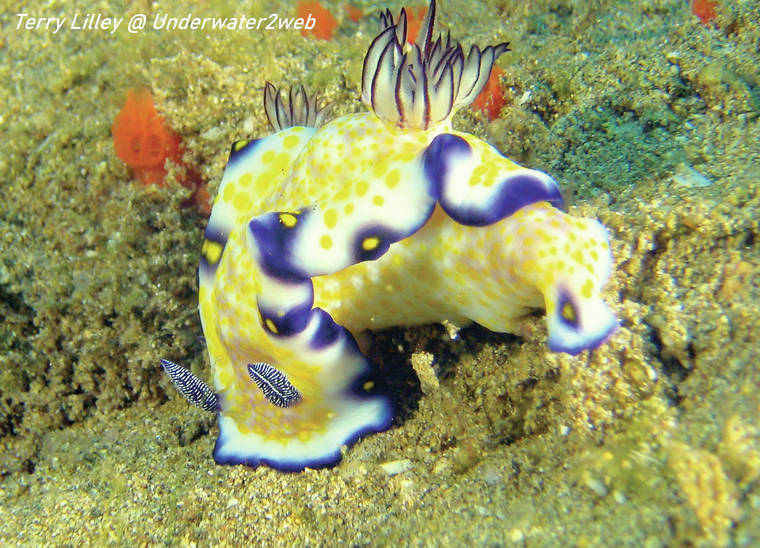This two-inch-long sea slug has some amazing colors, and was almost extinct a few years ago. In the 1970s divers would find these slow-moving creatures out on the reef on a regular basis, but by the 1980s they all disappeared. It wasn’t until recent times that they started showing up again, and when I saw two of them on a dive in Maui a few days ago I was extremely happy to know that this stunning nudibranch still exists in Hawaiian waters.
This two-inch-long sea slug has some amazing colors, and was almost extinct a few years ago. In the 1970s divers would find these slow-moving creatures out on the reef on a regular basis, but by the 1980s they all disappeared. It wasn’t until recent times that they started showing up again, and when I saw two of them on a dive in Maui a few days ago I was extremely happy to know that this stunning nudibranch still exists in Hawaiian waters.
Avid divers and underwater photographers travel the world just to take pictures of nudibranchs because they are so colorful. We believe they have these bright colors to warn potential predators to not eat them because they are toxic. Often in nature small animals that have a foul taste or venomous skin have bright colors, and nudibranchs are some of the most colorful creatures in the sea. The nudibranches do not produce toxins of their own, but they get the toxins from the food they eat.
“Nudibranch” means, “nude branchia or gills.” The feathery structures on top of the back part of their body are exposed external gills, whereas in most fish these gills are inside of their head. Nudibranches move very slowly across the reef, eating sponges and corals. Some species eat other nudibranches. They have a pair of antennae on top of their head to monitor their surroundings, and the imperial nudibranches are usually found in pairs, where one is crawling right behind the other.
Nudibranchs are soft-bodies sea slugs, and they can’t withstand strong surf or currents, so the best place to see them is inside of bays, lagoons or parts of the coastline sheltered from big waves.
Many nudibranch species only come out at night, but the imperial nudibranch is daytime-active. When traveling around the world to find these colorful creatures, divers often look for calm, muddy bays and river mouths that are called “muck dives.” These dive sites usually lack coral growth and colorful reef fish, but they are the home to the nudibranches and other invertebrates like starfish, octopus and sponges.
You can see our Hawaiian nudibranchs in action in the movie “The World’s Guide To Hawaiian Reef Creatures” at underwater2web and also follow my weekly marine life Instagram post at terry.lilley.
•••
Terry Lilley is a marine biologist who lives in Hanalei and is a co-founder of Reef Guardians Hawai‘i, a nonprofit on a mission to protect the coral reef. To donate to Reef Guardians Hawai‘i visit reefguardianshawaii.org.

Subscribe today for unlimited access.
Already a subscriber?
Login
Not ready to subscribe?
Register for limited access.
If you have a print subscription but require digital access,
activate your account.






Terry, thanks for sharing this. As an avid diver for 38 years, I share your love for the amazing flora and fauna to be found in the sea. It’s truly a fascinating world!